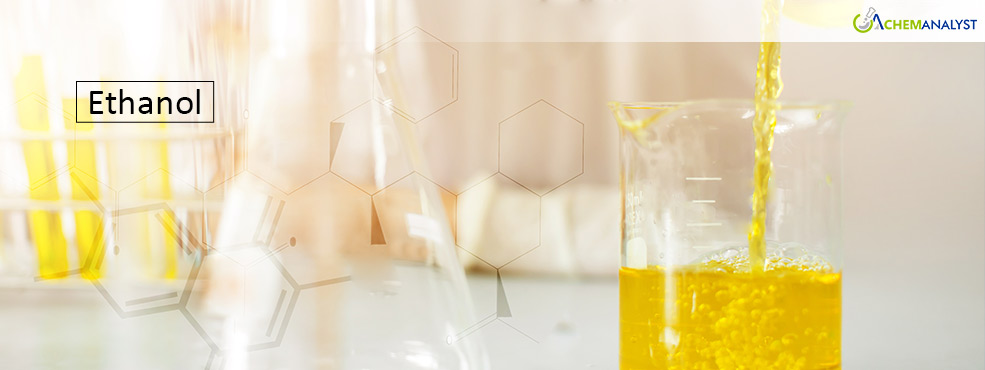Ethanol Market Heats Up: Brazil's Boom and Europe's Supply Squeeze Shape 2025 Trends
- 21-Jan-2025 3:30 PM
- Journalist: Patricia Jose Perez
Ethanol prices in Europe and Brazil showed a transition from steady to increasing trend in the first half of January 2025, driven by various regional factors impacting supply and demand. In Brazil, robust Ethanol production and government policy changes supported price stability, while in Europe, supply constraints and regulatory updates influenced market dynamics.
In Brazil, demand remained strong, fueled by increasing corn Ethanol output and a less severe impact from wildfires on sugarcane crops than initially anticipated in 2024. Corn-based Ethanol production in the center-south rose 30% year-on-year to 5.25 billion liters from January to November 2024, accounting for 17% of the region's total output, according to Unica. This increased supply exerted downward pressure on retail prices, enhancing Ethanol’s competitiveness with gasoline. Moreover, the Future Fuel Act’s proposed increase in the Ethanol blend ratio from 27% to 30% by April 2025 is expected to boost demand further, adding an estimated 1.2-1.4 billion liters annually.
Meanwhile, sugarcane crushing in Brazil’s center-south exceeded expectations, reaching over 600 million metric tonnes by November 2024, aided by favorable weather. Analysts predict that summer rains in December and January could further enhance sugarcane yields, supporting Ethanol production. However, the sugar market’s premium over Ethanol may limit output flexibility as mills prioritize sugar exports to meet global demand, especially from India. Despite these dynamics, increased corn Ethanol capacity is anticipated to balance supply and demand.
In Europe, markets faced challenges from a poor harvest season, particularly for wheat and corn, which strained feedstock supplies and raised production costs. Ukraine’s wheat and corn production fell below the five-year average due to unfavorable weather, while France also reported reduced wheat output. These factors, coupled with higher greenhouse gas (GHG) emission values under the Renewable Energy Directive (RED II), increased costs for European Ethanol producers. Despite these pressures, demand for high GHG-saving Ethanol is expected to rise, driven by Germany’s increased GHG quota in 2025 and the cessation of certificate carryovers from previous compliance years.
Additionally, the EU-Mercosur trade agreement, announced in December 2024, provided opportunities for Brazil’s Ethanol exports to Europe. The agreement introduced export quotas with reduced tariffs, potentially revitalizing trade flows. While industrial Ethanol saw favorable terms, the limited quota for non-industrial Ethanol may moderate the impact.
Outlook for the Ethanol market in 2025 remains optimistic but cautious. In Brazil, prices are expected to rise compared to 2024, according to market participants, driven by higher blend mandates and sustained demand. European market may experience continued price pressure due to feedstock constraints and regulatory costs. However, increased interest in waste-based and high GHG-saving Ethanol products could support premiums. The maritime sector’s shift toward biomEthanol and e-mEthanol under new emissions regulations may further influence demand dynamics.
Despite the growing prominence of electric and hybrid vehicles, Brazil’s vehicle fleet remains predominantly combustion-based, ensuring continued demand for Ethanol in the near term. Regional and global developments, including weather patterns, policy changes, and trade agreements, will shape the market’s trajectory through 2025.



